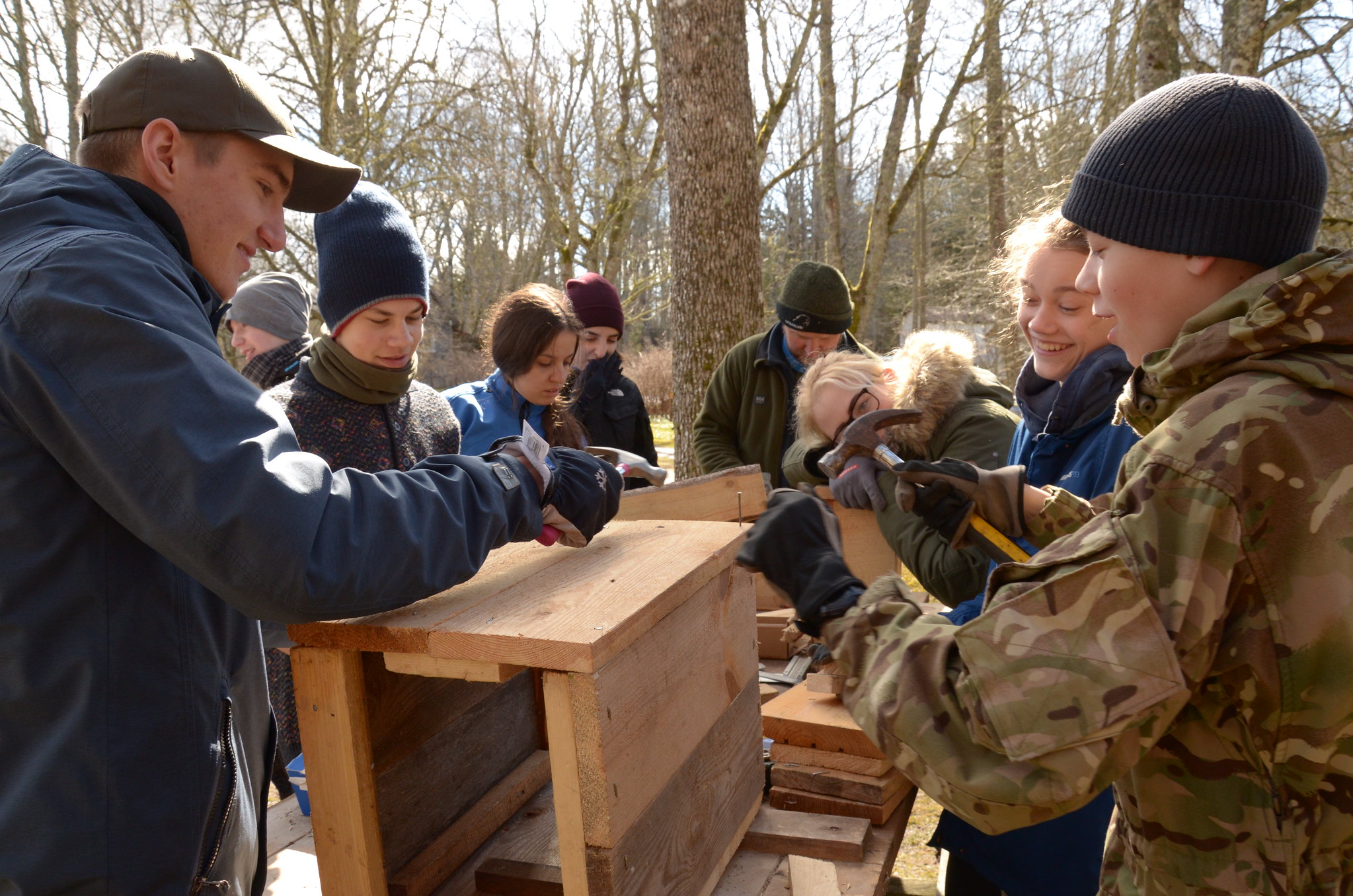Since 2002, the Estonian national curricula have included the cross-cutting theme ‘The environment and sustainable development’
Aristokli Hrebtov, the inspector of the schools of Saaremaa and the founder of the Saaremaa Society of Friends of Nature (founded in 1913), prepared a detailed circular letter for schools, titled ‘For the preservation of nature works’, in which he called on people to preserve nature monuments with the message ‘Let us love and protect nature!’. Not too long before that, Carl Robert Jakobson had done the same by sharing instructions on conserving nature in his school books and writing about how we must respect all beings in nature. These are just a few examples of the past, exemplifying people contributing to environmental education. From these individual examples, we can arrive at the present day, when we have a functioning network of environmental education, school students may benefit from participating in various study programmes, and adults, too, have the opportunity to partake in nature education. More than a hundred years later, Kalevi Kull, a biosemiotician at the University of Tartu, has said in the spirit of Hrebtov and Jakobson: ‘What people do with nature depends on how well they know nature’, adding that this knowledge stems from nature education.

Contributing to high-quality environmental education is one of the priorities of the Ministry of the Environment and its sub-agencies, in cooperation with environmental education centres and the Ministry of Education and Research, as well as universities. In order to increase environmental awareness and enhance the work in the field of environmental education, the Minister of the Environment and the Minister of Education and Research signed a memorandum of joint activities on 31 March 2017. Its operational programme, the environmental education and awareness action plan 2019–2022, was adopted in October 2018. The latter provides guidelines in the form of both existing so-called traditional activities as well as new activities, from assessing the quality of environmental education and cooperation with schools and local authorities to campaigns. Among other things, the action plan states that environmental awareness can only be increased through reliable, up-to-date, and clearly presented environmental information and environmentally conscious options.
The Estonian Environmental Education Association plays an important role in fulfilling the action plan, contributing to the coordination of a network of environmental education centres that is unique in the world (there are more than 150 environmental education centres in Estonia, including those managed by the State Forest Management Centre, organising trainings for its members, and conducting quality assessments on environmental education. A good foundation for effective environmental education is also the fact that our national curricula have included the cross-cutting theme ‘The environment and sustainable development’ since 2002, the aim of which is to support the learner’s development into a citizen who understands and preserves the environment. In addition, the Environmental Investment Centre (EIC) contributes to environmental education by supporting, among other things, the environmental education visits of kindergartens and school groups. All this provides a solid basis for nature education. It is important to make effective use of all this by integrating different thematic areas and creating meaning, because only a strong education can create a sense of nature, the ability to see connections, and the will to make environmentally conscious decisions. Therefore, we go by the ‘how’ question here – how to do all this, how to develop a science-based systematic point of view, and how to create real-life connections and speak to the learner through teaching.
Last modified: 17.01.2022